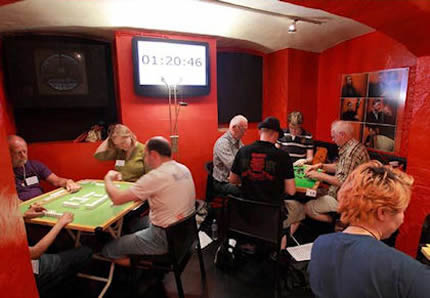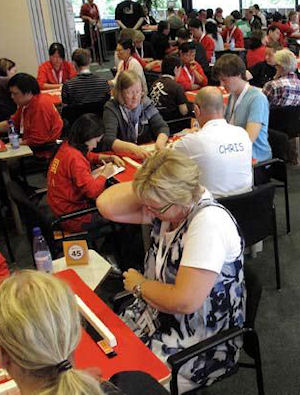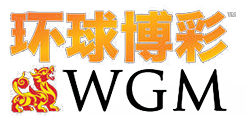This article first appeared in the Jan/Feb 2011 issue of World Gaming Magazine.
The game of mahjong is without doubt Chinese in origin. Wherever mahjong has found a home the look of the tiles are the same, but there are major variations in the way the game is played. Mahjong has moved its way through Asia and is on the verge of becoming a truly international game as record numbers of players take up this challenging game in the West. Getting everyone to play exactly the same game might be a tall order.
Mahjong is also called Maque in Chinese which simply translates to ‘sparrow’. It is apt considering where the game may be heading. The sparrow is a bird that breeds prodigiously and is common throughout the world. Mahjong is becoming a game that will be played in every corner of the globe, but there are challenges for the game in terms of standardising it.

In China, the game of mahjong is played for both enjoyment and for money. Tournament mahjong and playing for rankings in serious competitions is relatively new. Rules played in China differ between provinces, and even between cities, with more than 30 different rule sets being played. There are some scholars who want to change the climate by inventing “International Standard Mahjong Rules” which will unite the game worldwide, but there are many more detractors of this idea.
Once you cross the Pacific, mahjong is a whole different game again and anyone on the North American continent will say that they play “real” mahjong. ‘Mah-jongg’ (as it is called in the US) has been played in North America for nearly 100 years, thanks to American Joseph P. Babcock, who lived for some time in Shanghai. Babcock copyrighted the name ‘mah-jongg’ and imported sets into the US, as well as publishing a simplified rule set, giving birth to modifications of the game for the American market. The popularity of mahjong rose, fell and rose again throughout the 1920s and 1930s as people were intrigued by anything that was considered ‘Asian’ or ‘Eastern’. In America the game went into decline after the Second World War apart from continued popularity with women from Jewish communities who oddly enough embraced the game in large numbers.
Mahjong is often compared to poker – also a game that suffered high and lows in popularity until it rocketed to international prominence in the early 2000s. Over the next few decades we see a huge opportunity for Mahjong to boom as more Asian people call the West home and Asia rises even further in the Western mindset.

The World Mahjong Championship 2010 in Utrecht, the Netherlands
The World Mahjong Championship 2010 in Utrecht, the Netherlands
The US National Mahjongg League (NML) was established in 1937. The US rules are continually changing because the NML releases a new set of hand combinations every year. Nearly 300,000 players belong to the NML and annual tournaments are held throughout America using the League’s standardised rule set. With such a large database and hundreds of players attending each tournament the future looks bright. American players also gather for Mahjong cruises on a regular basis, which was also something that became very popular with poker players before its international boom. While the US game has strayed from its original Chinese roots, there is no doubt that with a large membership base and a governing body with over 70 years of experience the validity of US mahjong is becoming stronger year after year.
Europe, the other great Western hub, remains truer to Mahjong’s original form. This is because it hasn’t had the history the game has enjoyed in the US. For decades Japanese-style “riichi” Mahjong has been played in the Netherlands and Denmark, and it is surprising how few changes these two nations have made to the game in those years. Chinese Official Mahjong has also gained popularity in Europe.
The first World Mahjong Championship was held in Tokyo in 2002, but the World Mahjong Organization (WMO) established in 2006 later refuted this competition.
The European Mahjong Association (EMA) was established in 2005 during the first Open European Championship. In 2008 the first Open European Riichi Championship was also held and the EMA currently supports both the Chinese Official rule set established by the WMO (known as Mahjong Competition Rules or MCR), and the Japanese-style Riichi rules established by the EMA (known as Riichi Competition Rules or RCR). This is the problem that the game faces in Europe. Many are confused about what Mahjong actually is. Governing bodies are trying to accommodate all people who play the game instead of trying to unite them under one rule set.
It is not all bad news for Europe as the EMA now boasts 14 member countries and tournaments are held all over Europe throughout the year. Results from these tournaments are included in the EMA official rankings. The EMA has the largest official Mahjong ranking list in the world and the only international ranking system.

Thanks to a number of Japanese animations and comics like Akagi and the availability of Mahjong on the internet, the game is catching on throughout the world. With China’s emergence as the world’s economic powerhouse it is only natural that it will have more social influence worldwide. It will be interesting to see if the game unites under the one banner, with a common set of rules in the future. This will surely help its popularity.
The other way to look at it is to compare ‘Mahjong’ to a deck of cards. Just like a deck of cards, the tiles can be used in different ways to play different versions of the game. This is an interesting argument but it will still leave new players confused and Mahjong may well need its ‘Texas Hold’em’ which everyone can learn and relate to.
Either way we can look forward to the future of this game which combines a nation’s passion with a world hungry for gaming and entertainment pastimes that challenge the mind and the skill of its players.







